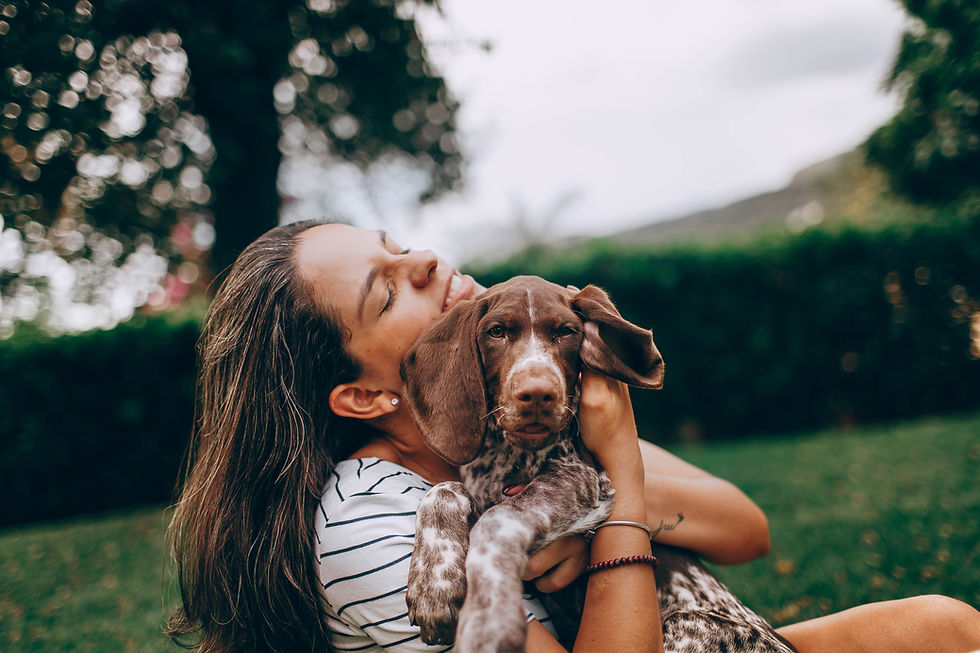Pain & Reactive Behaviour
- Renée at Bravo Dog

- Mar 10, 2024
- 3 min read
Updated: Mar 30, 2024
Many times when our dog is experiencing reactivity, our first concern is how to STOP the behavior. This is human nature. Before reacting to our dogs reactivity, it's important to investigate the origin of the behavior and whether pain is contributing.
You would be very surprised at the amount of clients I see in which some type of pain that has gone undiagnosed is contributing to their reactive behavior.
“Daniel Mills, FRCVS, a veterinary researcher and behaviorist at the University of Lincoln (England), suggests that a large portion of behavior problems are exacerbated or caused by physical pain, and that resolution of that pain can mitigate or even resolve the behavioral issue. Almost 80% of the behavior problems in his own practice, says Dr. Mills, have a component of diagnosed or suspected pain.”
How dogs may display pain
Our dogs only have a few ways to communicate when they are uncomfortable, stressed or in pain. Often times they may not appear to indicate that they are in pain at all; that is to the naked eye.
Body language can be very subtle. Behavior to watch for:
Growling when being touched or moved
Flinching when being picked up or being leashed up
Less active or willing to jump up or down from different elevations
Less tolerant with other animals in home (snapping, growling, avoiding)
Snarking at other dogs more frequently or more intensely
Not enjoying things they usually enjoy, increased lethargy
Not wanting to be touched
Excessive licking
Excessive vocalization
Restlessness
Aggression
Changes in sleeping habits
Physical signs:
Tight or twitching muscles
Shaking or trembling
Arched back
Holding their head below their shoulders
Panting

If your dog suffers from any of the below, this can impact their behavior greatly and we can also see anxiety and stress as the cause or tip-off in some cases.
Recurring Skin, Allergies and IBD type symptoms:
Red, itchy, flaky skin
Ear infections
Eye abrasions
Diarrhea
Sudden Behavior Changes
Often times my clients describe their dogs' behavior prior to more severe reactivity as a milder form of that reactivity. It has not appeared suddenly but more gradually. If your dog has drastically changed how they behave towards other dogs, people or interactions in general, this is a sign to see your veterinarian. Now, depending on your dogs activity level and lifestyle they may need to see a specialist if your general practice vet has not been able to find anything. It may mean seeing a mobility specialist.
Pain Trials
If your vet is having a hard time diagnosing any pain, they can offer (or you can ask) to do what's called a pain trial. Essentially, this is testing some pain medication on a trial basis to see how it affects your dog and their behaviour. These can be a very simple way to rule out pain without having to conduct further diagnostics such as xrays. Don't hesitate to ask your veterinarian to conduct a pain trial!
Overall, we as a society are NOT focusing on how pain is impacting our dog's behaviour because we can't visually see anything wrong. Dogs are stoic, they may not show pain readily and as mentioned your vet may not see anything with an exam.
Resources:
.png)




